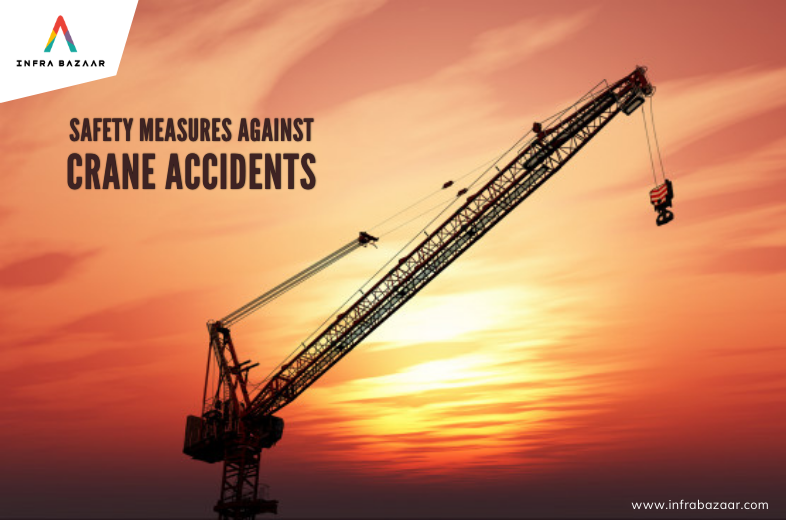
Posted By:Infra Bazaar
One of the many types of equipment used during constructions are the mighty cranes, the tall giraffe’s of every construction. They help us do all the heavy lifting, loading, unloading, rigging etc for us. Experts at infrabazaar.com say, cranes being extremely useful and powerful does not take away from the fact that these cranes are a task to handle until one truly learns how to use them and stay safe at the same time!
It is believed that there have been quite some casualties, about 297 deaths especially between 2011-2017 as reported by the Bureau of Labor statistics, USA & as reported by Indian Express, Delhi, India reports 20 times more deaths than those in Canada, UK or most developed counties of the world.
These statistics make is imperative to take measures of safety, while the construction work is on! Let's briefly review some important points to understand this:
Cranes are aplenty types. Therefore, it becomes vital to understand the operator manuals in the beginning, because the load capacities, safety mechanisms, stabilizers, counterweights , operator controls, failsafe devices and other features may be unique to the manufacturer's product only because even if you employee trained operators they cannot guarantee functionality of a crane without reading its specific manual.
The Occupational Safety and Health Administration (OSHA), which is considered as "the authority" for safety standards, has allowed only trained and certified personnel for setting up, rigging, signalling and operating cranes. Following these guidelines has proven to be the best form of safety on-site.
Ensure to use a crane that best suits the requirements of your project. For example, Crawler cranes are most suitable for soft terrains owing to their tracks instead of the regular rubber wheels. Rough Terrain Crane may not be able to travel on the roads but can handle tough terrains well. All-terrain Cranes is the one you are most likely to choose because of its excellent ability to travel on roads and on rough/soft terrains.
Also, a key point to remember while using cranes is the load radius. The rule is to keep away the load from the center of the crane; the less the weight the crane can manage without tipping over or collapsing , therefore smoother and safer the whole process becomes.
Using the conventional hand signals and communication protocols can help facilitate safety while operating the cranes. An experienced and qualified personnel could easily communicate the information inside a lift to a crane operator. This aids adaption of the ever changing needs and situations during constructions. For example,
When to swing and lift the boom
When to raise and lower the load
When to stop or rig a crane
To communicate, radios and walkie-talkies are also used to ensure fast and smooth progress of work and movement.
It's crucial to have a complex lift plan used to load heavy weights as much as 50 to 80 kilos to abstain from tipping over of the loads or causing damages to heavy equipment. Many times lifts are the cause of high risks to life and material. To avoid accidents, having a fool-proof plan and monitoring these plans will help maintain security. Having operated cranes bought on rent could also do the trick, for it ensures on-site safety and management by trained professionals!
#cranesafety #constructionequipment #heavylifting #loadradius #occupationalhealth #communicationsafety #infrabazaar